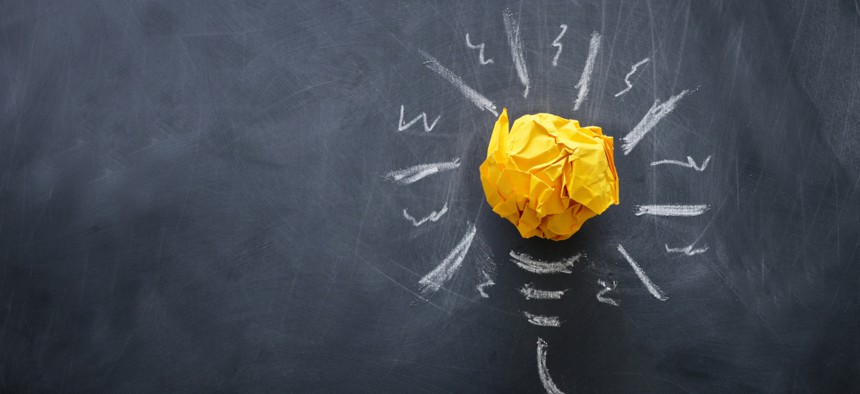CIA’s New Innovation Lab Could Mean Big Paydays for Federal Scientists

tomertu/Shutterstock.com
The agency is investing in cutting-edge technology and offering officials a chance to profit off their developments.
With sights set on enticing and retaining top tech personnel—and invigorating its spot within the nation’s broader research, development and innovation-pushing landscape—the Central Intelligence Agency set up its first-ever federal lab.
Officially unveiled Monday, CIA Labs is meant to be “a federal laboratory and in-house research and development arm for CIA to drive science and technology breakthroughs for tomorrow’s intelligence challenges,” according to the agency’s announcement.
Through it, federal insiders can steer multidisciplinary research and development, testing and engineering across a range of on-the-rise areas, including advanced manufacturing, artificial intelligence and machine learning, biotechnology, blockchain, augmented reality, high performance and quantum computing—and more.
Part of the agency’s intent in launching the lab is to offer its workforce new opportunities to commercialize their creations.
“While CIA has long conducted research and development, the federal lab mechanism provides an established pathway for partnership with other labs and academia and grants unprecedented opportunities for CIA officers to obtain patents and licenses for their intellectual property,” CIA Spokesperson Nicole de Haay told Nextgov Wednesday.
Though more high profile facilities like NASA’s Jet Propulsion Lab or the Energy Department’s 17 national labs generally come to mind when visualizing players in this space, CIA Labs joins an existing community of more than 300 U.S. federal labs working to advance technological innovation. And as de Haay alluded to, the federal lab mechanism allows CIA officers to obtain patents and licenses for intellectual property they produce at the agency. MIT Technology Review reported Monday that CIA officials who invent new tools and technologies through the lab will now have the opportunity to patent, license, and profit from their work and intellectual properties—“making 15% of the total income from the new invention with a cap of $150,000 per year.”
Such an amount could come close to even doubling agency salaries.
Dawn Meyerriecks, head of CIA’s Science and Technology Directorate, noted in the agency’s release that “with CIA Labs, we’re now better positioned to optimize developments and further invest in our scientists and technologists.” During a virtual summit hosted by the Intelligence and National Security Alliance last week, Meyerriecks originally previewed the new lab, further pinpointing the overall aim.
“It creates relationship across the U.S. academic community and academia, as well as the National Labs of all flavors, so that we can talk about tough technical challenges,” Meyerriecks said. “But by giving patents, [CIA may] also provide financial reward over and above salary to our inventors, because they in fact can accrue license revenue, so that those good ideas actually return value not only to the individuals, but to the entities that register that information.”
In its earliest days, the CIA Labs team has already filed two provisional patents, de Haay confirmed. In her talk at the summit, Meyerriecks said this “will hopefully not only reward the inventors, but the folks that sponsored the patents—and yes, that would be us.”
“That's a different way to think about taking care of our people,” she added.
Building on the CIA’s many decades-long pursuits since creating the concept for the lithium ion battery in the 1960s, the lab team has also recently joined the newly launched Federal Consortium for Advanced Batteries, which de Haay called “an initiative to optimize the development and production of lithium battery technologies.”
And at least for now, officers involved will not collectively operate from one physical location.
“While CIA Labs is managed from CIA Headquarters, it is a virtual lab, which gives us maximum flexibility for the research partnerships we pursue and fulfill,” de Haay said.
Outside partners from federal labs, academia, and beyond looking to team up with the lab—or participate in Cooperative Research and Development Arrangements—are invited to complete an online form.






